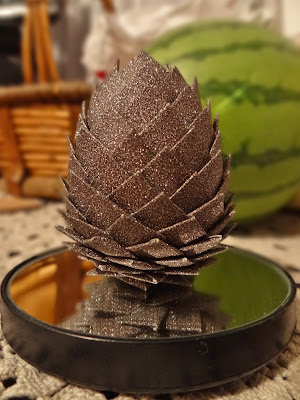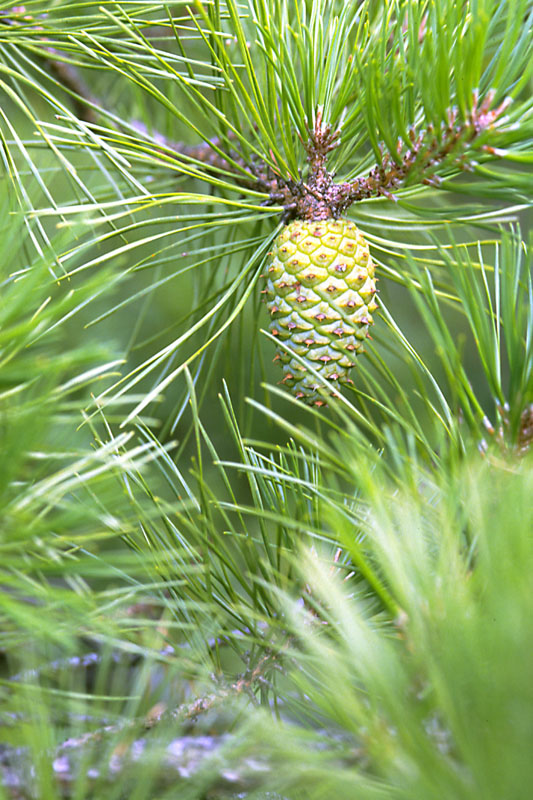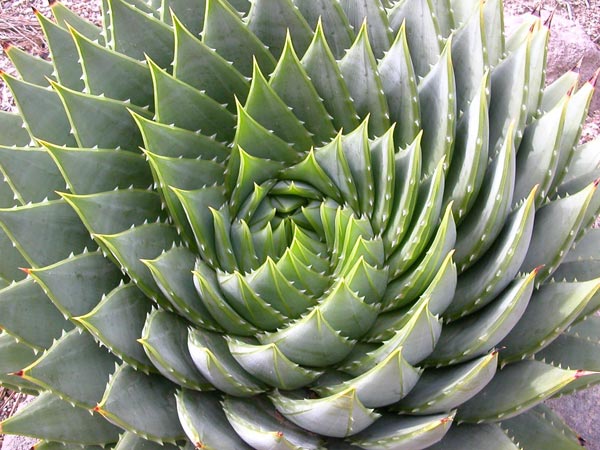"Serotiny is an ecological adaptation exhibited by some seed plants, in which seed release occurs in response to an environmental trigger, rather than spontaneously at seed maturation. The most common and best studied trigger is fire, and the term serotiny is often used to refer to this specific case."*
 |
| #PitchPineCone |
When I was little girl there were huge forest fires in the central pine barrens of Long Island. On a drive out to Girl Scout camp I passed the pine trees and saw only charred husks protruding from the hills and dips. I felt so hopeless for our trees. My parents told me about the amazing seeds dropping and surviving the fires only to flourish later. It was a hard thing to believe that from the black crooked ruins I would ever see green again. Year after year it still amazes me when I go camping with GSNC. From the highway I can see the Pitch Pine growing slowly, swallowing the wasteland that remained after the fire.
I wonder if there is a word comparable to this for fish and for the ocean? Starfish regenerate (so do lizards and plenty of other things) but it just doesn't feel the same as some brilliant backup plan to defy death -- or as concise as some cosmic "oh @#$%" button.
In the Hudson River there is a pretty lucky fish. A Tomcod. It is now known that from 1947 to 1976 General Electric dumped Polychlorinated biphenyls (PCBs) into the Hudson River. (PCBs were widely used in industrial items such as transformers and capacitors as well as in voltage regulators, and old electrical devices to name a few things***) PCB's are environmentally toxic, and are a persistent organic pollutant, and have links to cancer-- and just to reiterate, they were being dumped into the Hudson River.
"It turns out the [Tomcod fish] sport a handy modification to a gene encoding a
protein known to regulate the toxic effects of PCBs and related
chemicals, called the aryl hydrocarbon receptor2, or AHR2. The
fish are missing six base pairs of DNA of the AHR2 gene, and the two
amino acids each triplet would code for. PCBs bind poorly to the mutated
receptors, apparently blunting the chemicals' effects."**
It's extremely hard to resolve the delicate balance between innovation and regulation. If there were regulations in place the way we have them today back in the early 1900's it's hard to imagine we would have ever seen the Wright brothers get off of the ground. Regulation proved to really create too much red tape for the manned space program. The same program which gave us the blueprints and go ahead to have hand held computers that do just about everything less than 50 years later of a few boots kissing moon dust.
Red tape gets in the way but hopefully helps to alert us of PCB's or something else like BPA's. Over the next few months I plan on planting some of my own seeds and hoping they know instinctively to grow when things heat up. No, the river isn't on fire but certain things are happening to it that give me the same reaction I had when I was younger looking out at those black crooked spikes.
 |
| #HighlightsMagazine would have had a field day with this photo |
Estimated to contain three and a half million tons of junk the Pacific Ocean Garbage Dump is a testament to our throw away products and convenient packaging. In 1997 Christian J. Moore found the patch that "was predicted in a 1988 paper published by the National Oceanic and Atmospheric Administration (NOAA) of the United States."*+ Moore studies a small fragment of the Pacific Ocean Garbage Patch off the coast of California --that is twice the size of Texas. In this region of the patch we see plastic soup on the surface of the ocean and on the shores we find plastic sand. The sand of the future?****
At least we in New York can be comforted by the fact that this dump is in California safely distant enough from the odd Tomcads and the river that was too toxic to dredge for 32 years. Well, apparently there are not one but five floating garbage continents, with plastic particles being found a football field below the surface.
I'm an artist, and as one, I appreciate concise visual representations of ideas that may be too broad or abstract to fully comprehend. I am still trying to get more accurate numbers but the numbers I am seeing are very similar at least. The numbers I am about to present are based off of data from wiki answers. They looked to be consistent with others but we're on the low side. Here we go:
22 Billion water bottles are thrown out per year, roughly 1.86 Billion per month and 60 million per day.
I now understand the need for earth years in astronomy... What do those numbers even mean to you 1:1? You know what a day feels like but trying to envision 60 million of anything is pretty challenging.. So let's just go one more measurement of time smaller 2.5 million water bottles are trashed per HOUR. Ok that's still hard but we can totally work this out.
 Here are 90,000 people at the rose bowl. So let's just use really easy math and pretend for a moment that this sea of humanity to the left here isn't 90,000 but is actually 100,000. Basically every single human (dot) in this photo would have to each throw away 25 bottles of water. You know those heavy packs of 24 you see under people's carts? Every single person in this stadium has to drink and toss an entire 24 pack each and happen to have one extra lying around for good measure. I have confidence in them, but they will be doing all of this in an hour's time.
Here are 90,000 people at the rose bowl. So let's just use really easy math and pretend for a moment that this sea of humanity to the left here isn't 90,000 but is actually 100,000. Basically every single human (dot) in this photo would have to each throw away 25 bottles of water. You know those heavy packs of 24 you see under people's carts? Every single person in this stadium has to drink and toss an entire 24 pack each and happen to have one extra lying around for good measure. I have confidence in them, but they will be doing all of this in an hour's time.
If we want to get another perspective on the same number, 10 empty bottles weigh 1 pound so the empty bottles coming from all of our thirsty soccer enthusiasts would weigh 250,000 lbs total. That's the equivalent of 17-18 adult male African Elephants (the biggest land mammal on earth) rolling in-- every hour.
If it's 2.5 million water bottles per hour then let go down to the minute. We throw out ~41,666 bottles of water per minute. That's like throwing away an SUV every minute weight wise (roughly 4100 pounds). And if you were to lay the 2.63 inch wide bottles down flat end to end (~8" tall) it would span over 5 miles. Imagine a water bottle train from Union Square in Lower Manhattan up to Marcus Garvy Park in Harlem.
Finally, based off of the starting number: every second we throw out about 700 water bottles. Not recycle, throw out, this number represents what is currently being lost. This is enough to cover 84 square feet of space. Much of this ends up in run off and helps to nourish the garbage dump in the ocean.
SuperFISHal Serotiny is a human response to non-coniferous organisms incapable of dropping plan B seeds in case of metaphorical fire. This is a story about my work with man-made Strobili, and how a tiny seed will make a really big fish.
 |
| #strobili |
*http://en.wikipedia.org/wiki/Serotiny
**http://news.nationalgeographic.com/news/2011/02/110217-hudson-river-pcb-fish-evolution-water/
***http://www.epa.gov/osw/hazard/tsd/pcbs/about.htm
****http://abcnews.go.com/Nightline/video?id=4530376
*+http://en.wikipedia.org/wiki/Great_Pacific_garbage_patch

















